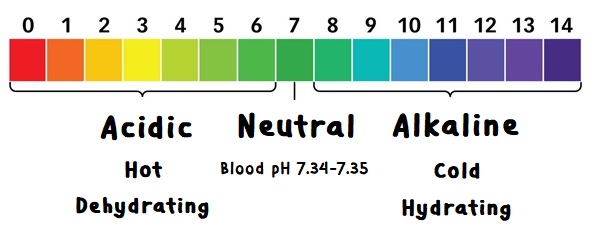In order to comprehend the importance of alkaline pH for cleansing, nourishing, detoxification, and cell regeneration, as well as the degenerative nature of acidity and its association with chronic illnesses, we must delve into the realms of chemistry and physics. By doing so, we can gain a deeper understanding of which side of the chemical spectrum we should lean towards in order to experience true healing and vibrancy. I aim to present this information in a simple and accessible manner, as health should not be unnecessarily complicated.
It’s worth noting that there are variations in acid/alkaline food charts available on the internet, and caution must be exercised when selecting a chart to define the chemical properties of foods. For instance, some sources may label tomatoes as alkaline-forming foods, while they are clearly acid-forming.
To comprehend alkalinity and acidity, we must first understand their attributes. Alkalinity is negatively charged and cationic, meaning it has a dispersing or breaking apart effect. It possesses the ability to cool, soften, cleanse, pull apart, and break down stone formations (hardened and accumulated acids) and congestion in the lymphatic system. On the other hand, acidity is positively charged and anionic, leading to compounding or coming together, resulting in bonding effects. This contributes to blockages, stiffness, pain, congestion, tumor growth, and stone formations in the lymphatic system. Clearly, the acid side of chemistry is not where we want to find ourselves. To facilitate healing, we need to shift towards the alkaline side.
The pH factor measures the acidity or alkalinity of a chemical solution and is placed on a scale ranging from 0 (highly acidic) to 14 (highly alkaline). Although humans are primarily alkaline-based beings, excessive alkalinity can have similar burning effects as the acid side of chemistry. However, in today’s world, it is challenging to achieve alkaline toxicity. The body constantly strives to maintain homeostasis, or balance. A striking example is the pH of our blood, which falls between 7.34-7.35. Even a slight deviation (0.5 pH) from this range can lead to a coma, underscoring the delicate balance required for our existence.

While various parts of our body exhibit different pH levels, the majority of our internal systems lean towards alkalinity. To assess your own pH level, a simple method involves using litmus (pH) paper and testing your saliva daily. This provides firsthand insights into how different foods affect the pH level within your mouth, the starting point of the gastrointestinal tract.
The PRAL formula (Potential Renal Acid Load) offers a means to calculate the acidity and alkalinity of food sources. It takes into account the protein, phosphorus, potassium, magnesium, and calcium content of a given food. A negative outcome signifies alkaline potential, while a positive outcome indicates acidic potential. The weight of the food sample used in the formula is 100 grams.
It is important to note that recent research has shown an association between PRAL values and risk of death from all causes. In women, both highly acidic and highly alkaline PRAL values were linked to an increased risk of mortality. Similarly, in men, deviations from a PRAL value of zero in either alkaline or acidic directions were associated with higher all-cause mortality risk. These findings suggest that consuming excessive amounts of meat, grains, nuts, or alkaline-forming foods may not be optimal for health.
For cleansing, detoxification, and the regeneration of new cells, a diet consisting primarily of fruits, berries, and melons is highly recommended. Once the body has undergone detoxification, other food sources can be gradually reintroduced
